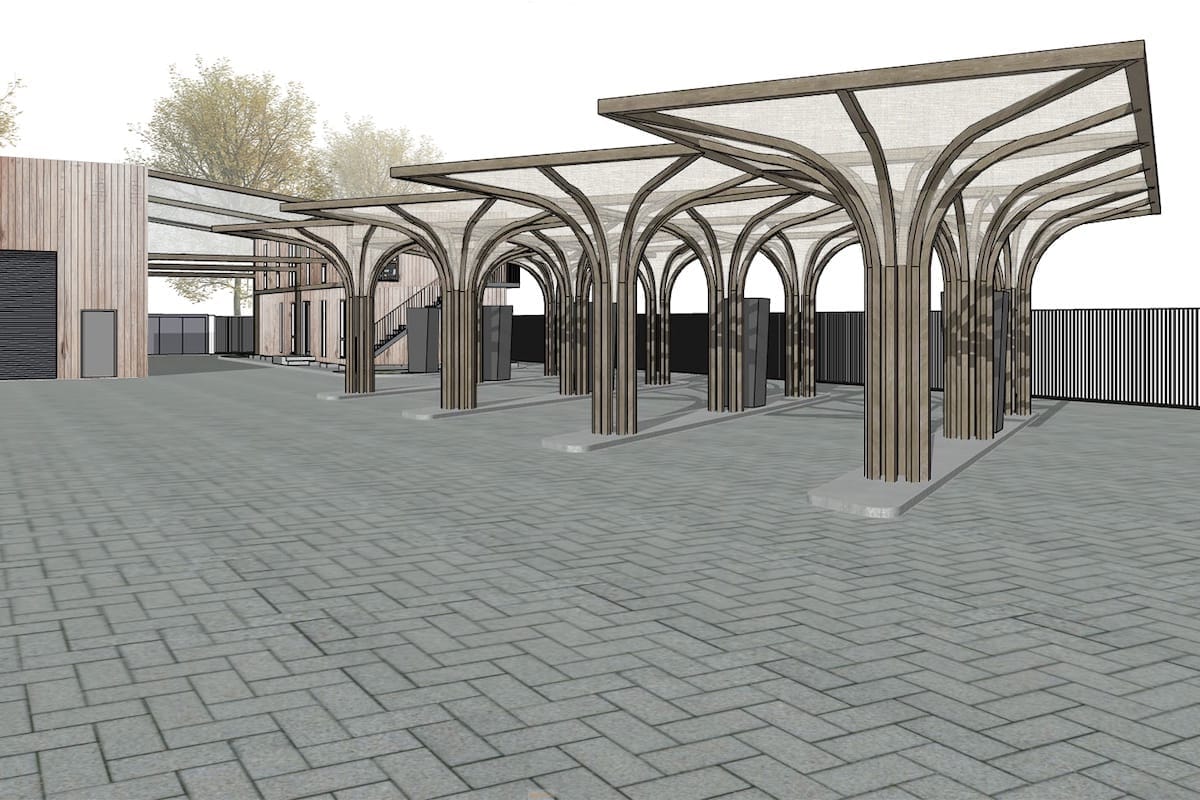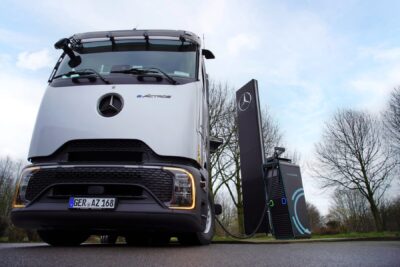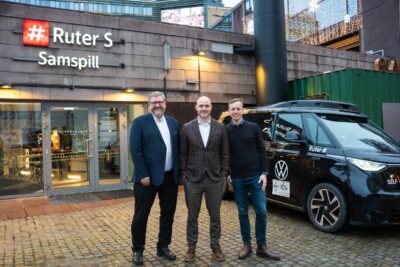Hamburger Hochbahn gears up to launch autonomous shuttles
The ALIKE project, which is subsidised by the German government with 26 million euros, aims to create the basis for the future commercial provision and scaling of ridepooling services with autonomous vehicles. To this end, the first shuttle vehicles are to be put on the road this year in an operational area from Stadtpark to the Elbe and from Schlump to Wandsbek. Two vehicle models will be used: the Holon Urban (until recently called the Holon Mover) and the VW ID. Buzz AD.
Hamburger Hochbahn has announced that it will begin building a 2,000 square metre depot specifically for the autonomous shuttles soon. Construction is due to start in mid-May. The first vehicles from this location are to go into test operation on Hamburg’s streets as early as the second half of the year.
The site offers space for up to ten vehicles and is centrally located in the 37 square kilometre operating area, which should enable efficient operations. The depot offers parking spaces, including the necessary charging infrastructure for the autonomous shuttles from the manufacturer Holon, which are operated by Hamburger Hochbahn. When building the depot, Hamburger Hochbahn attached great importance to sustainability: green roofs, photovoltaic systems to generate its own electricity and a modular design of the administration building are intended to enable flexible and resource-saving construction.
From mid-2025, Hochbahn plans to carry out the first test runs with the Holon Urban, albeit initially without passengers on board, but with a safety driver. From 2026, a closed user group will then be able to book the autonomous shuttles via the HVV switch and Moia apps. The barrier-free vehicles have a capacity of up to 15 people and can travel at speeds of up to 60 kph.
However, as mentioned above, the Holon Urban will not be the only vehicle in the ALIKE project. There is also the autonomous ID. Buzz AD from Volkswagen Commercial Vehicles, which will soon also be used in a robotaxi service from VW and Uber in the USA. When the ALIKE project was presented last autumn, it was announced that the ID. Buzz AD would also be launched in mid-2025. There has been no update on this so far. However, the operator of these vehicles is not Hamburger Hochbahn, but VW’s ridesharing service Moia, which is likely to use its own depot for the vehicles.
Both the Holon Urban and the ID. Buzz are equipped with a self-driving system from technology company Mobileye and can move without a human driver at level 4 in a limited area. The vehicles use cameras, radars and lidars for 360-degree environment recognition and high-performance computers to convert the data into driving commands.
The ALIKE project is not intended as a robotaxi service where each passenger can order their own vehicle, but as a ridepooling service. An IT system pools requests from passengers travelling in a similar direction. Each passenger is picked up individually from their personal starting point and taken to their destination, where other passengers may be in the vehicle. This ‘pooling’ is intended to make journeys cheaper for the individual passenger than a regular taxi ride and at the same time offer more individuality than scheduled public transport services.
hochbahn.de (in German)





0 Comments